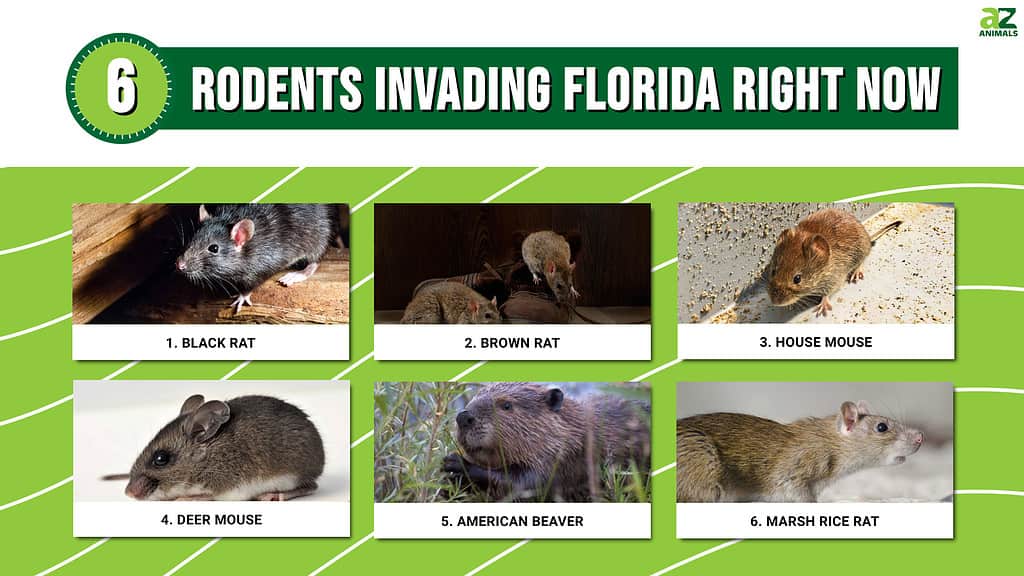
©
When people think of Florida, images of palm trees and beaches come to mind. But there’s a player in town that’s causing quite a stir: rodents. Residents and businesses in Florida are encountering a growing population of small furry pests, and it’s causing a lot of trouble.
From damage to property and gardens to concerns about the spread of disease, the presence of these invaders has many people on edge. So, let’s explore the mystery of rodents in Florida and find out whether these invaders are dangerous or not.
1. Black Rat (Rattus rattus)
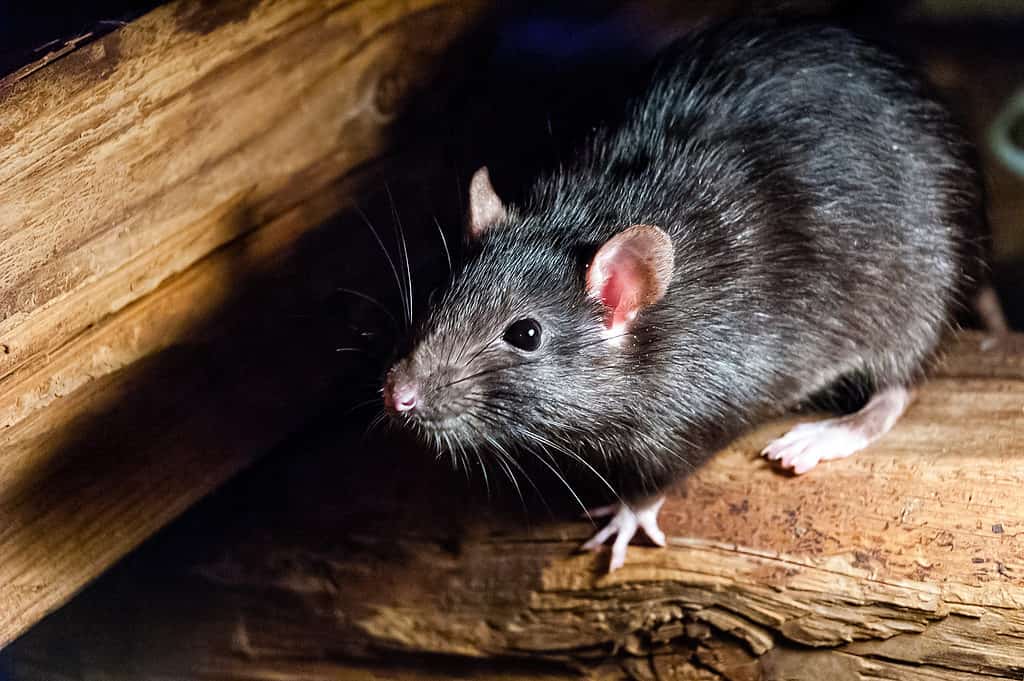
Although they are naturally curious, black rats are also cautious and will generally avoid danger rather than confront it directly.
©Carlos Aranguiz/Shutterstock.com
The black rat, commonly referred to as the roof rat, has been a frequent sight in Florida since 1800. These rodents are recognized for their exceptional climbing skills and their inclination to create nests in elevated locations, such as attics or beams close to rooftops.
While black rats might appear similar to their brown counterparts, they possess unique physical features, including a more slender build, a lengthier tail, and bigger ears. Their typical coloration ranges from grey-brown to a light grey underbelly, but some individuals can be entirely black. Adult black rats exhibit a range of body lengths, spanning from 5 to 7.2 inches, and their tails may extend anywhere from 6 to 8.7 inches.
As omnivores, black rats will eat almost anything, including plant-based materials like fruits, nuts, and grains. They also eat invertebrates such as insects and are known to store food in their nests.
These resourceful rodents have an affinity for urban settings, and they frequently inhabit roofs, hollow walls, trees, scrapes, and burrows in and around agricultural areas. Although they are naturally curious, black rats are also cautious and will generally avoid danger rather than confront it directly.
It is intriguing to note that rats were once considered symbols of good fortune by the Romans. Despite their remarkable agility, black rats are colorblind and possess limited vision. They typically come out after the sun goes down and hide during the day.
Are Black Rats Dangerous?
Humans face significant threats from black rats, as these pests are notorious for wreaking havoc on agriculture by consuming crops and demolishing fruit-bearing trees. In addition, they often cause damage even to the resources they don’t consume.
These rats carry fleas on their body, which harbor various pathogens that can infect both humans and livestock. Some of the diseases that black rats can transmit to humans include Listeria, Hantavirus, and Salmonella. Besides, they can cause substantial damage to structures in a short period.
Not only that, black rats have a severe effect on local ecosystems, particularly on islands. These rodents are the cause of the disappearance of several species of birds, small mammals, and reptiles.
2. Brown Rat (Rattus norvegicus)
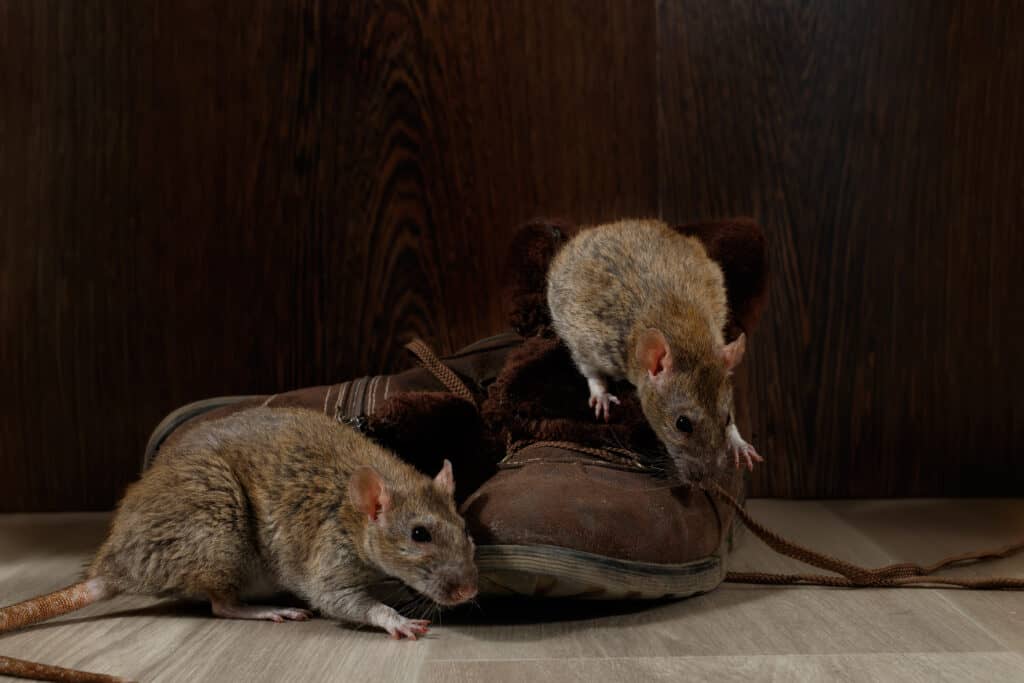
If they have the chance, Norway rats will live in groups growing to hundreds of members, called colonies.
©torook/Shutterstock.com
Although not as widespread in Florida as the black rat, the brown rat can still be spotted in cities like Orlando. These rodents are also referred to as Norway rats and are usually found in locations where they can easily access human food waste, such as sewers.
The brown rat’s appearance is characterized by its grey-brown fur, long and scaly tail, large bare ears, and pointed nose. They are much bigger than any rat species, averaging a total length of 16 inches, with a tail that is typically just slightly shorter than their body.
Brown rats can eat almost anything from fruits, seeds, insects, and birds’ eggs to small mammals. They can be found sheltering under bushes, in urban sites such as sewers, or constructing deep burrow systems and nests using shredded materials. Brown rats are commonly found in coastal urban areas and are closely associated with humans.
The name “Norway rat” originated from a mistaken hypothesis in 18th-century England that these rats were native to Norway. However, recent research has confirmed that the brown rat is native to Asia, particularly northern China or Mongolia. Brown rats are formidable competitors and can easily displace other rat species like black rats.
Historical records suggest these rats made their way to the United States in 1776. They arrived in shipping containers carrying grains and other food supplies.
Are Brown Rats Dangerous?
Brown rats pose a significant threat to humans and other animals as they carry various pathogens and bacteria. Their urine, saliva, or droppings near humans can be the reason for many diseases. Contamination of food and kitchen surfaces can also lead to illness if not properly disinfected.
Although uncommon, wild brown rats can bite humans, which can be dangerous. However, one of the most detrimental effects of brown rats on the property is their ability to puncture water pipes, chew through gas pipes, and damage the insulation surrounding electrical cables. This behavior can result in severe consequences such as flooding, gas leaks, and even fires.
3. House Mouse (Mus musculus)
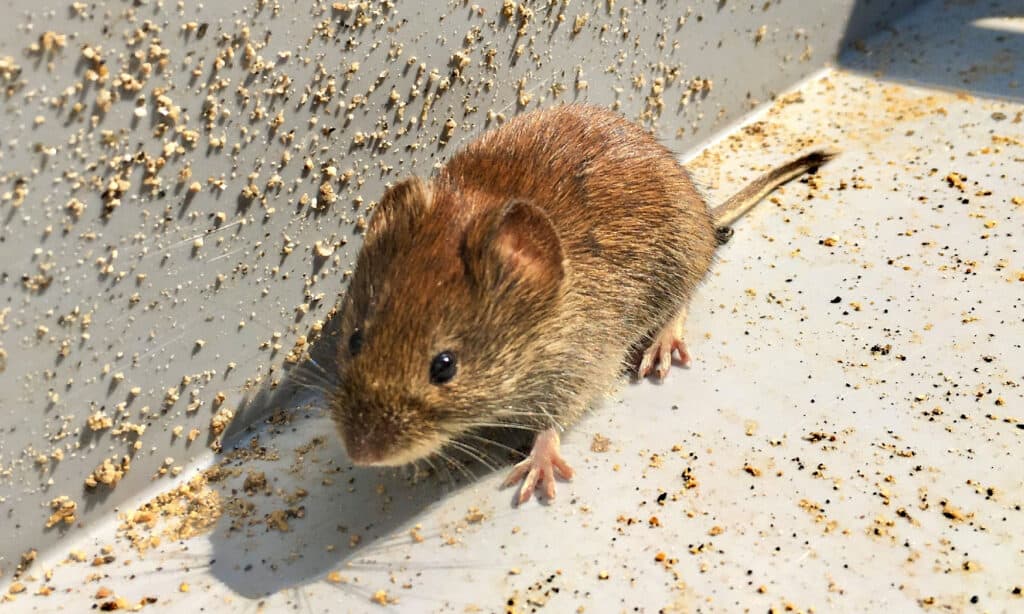
The house mice are renowned for their exceptional agility, with their remarkable swimming skills and adept jumping abilities.
©iStock.com/Bruno_il_segretario
The house mouse can be found throughout the state of Florida, often in areas associated with human activity. This mouse was introduced to the Americas during the early 16th century.
Typically, house mice have a dusty gray color with cream bellies, although fur color can vary from dark gray to light brown depending on their location. They have pointed muzzles and large ears with some hair, and their body length ranges from 3 to 4 inches, which is smaller than brown or black rats.
In indoor environments, they tend to eat almost anything. As their name suggests, these small animals thrive wherever humans reside, particularly in farm buildings, warehouses, sheds, and garages.
They are renowned for their exceptional agility, with their remarkable swimming skills and adept jumping abilities. They also have an excellent sense of balance, which further enhances their physical prowess. House mice primarily depend on their acute sense of smell and highly developed hearing abilities to communicate.
Are House Mice Dangerous?
Despite their adorable appearance, house mice are considered dangerous and destructive pests. Their saliva and feces can spread bacteria, leading to contaminated food and allergic reactions in humans.
House mice are notorious for their constant chewing, which can lead to damage to electrical wires, clothing, books, and furniture. In addition, they have a destructive behavior towards storage boxes, electrical lines, and other materials while constructing their nests.
In agricultural communities, house mice can cause machine and equipment malfunction, leading to significant losses in commercial farming enterprises. Mice-contaminated food is also rendered unfit for consumption, further exacerbating the economic impact of these pests.
4. Deer Mouse (Peromyscus maniculatus)
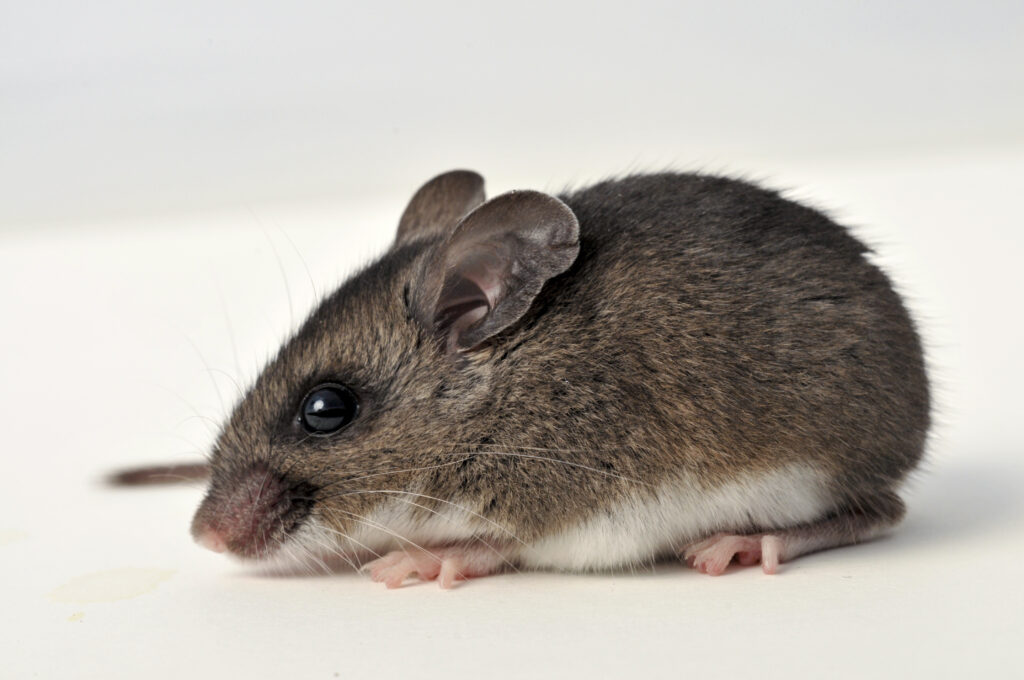
Being excellent swimmers and climbers, the deer mouse prefers to forage in shallow waters.
©Close Encounters Photo/Shutterstock.com
The deer mouse is named for its graceful jumping abilities and is distantly related to the common brown rat. It can grow up to 8 inches long. Its fur is short and yellow-brown, with a white underside, while its ears are relatively large and without fur.
Although they are mostly found in woodlands, Florida mice are also found in desert regions. They are typically found outside in rural areas and do not usually invade residential spaces. However, they are a common problem in agricultural regions, and they sometimes seek shelter in homes during winter.
The Florida mouse has a diverse diet, ranging from plant products and fungi to invertebrates and carrion. It has also been known to engage in coprophagy, consuming its feces. During fall in cooler climates, they store food in secret stockpiles.
The Florida mouse is primarily active at night, spending most of its time on the ground, but it is also a skilled climber. Their activity revolves around their nest and collecting food items. In prairies, they create nests just below the surface level in their burrows or those abandoned by other creatures.
Being excellent swimmers and climbers, the deer mouse prefers to forage in shallow waters.
Are Deer Mice Dangerous?
Deer mice pose two significant threats to human life: causing structural damage and spreading diseases.
Deer mice can threaten human and animal health in a few ways by transmitting Lyme disease and plague.
The deer mouse is also notorious for its association with the potentially deadly Hantavirus, which can be transmitted by infected deer mice and lead to Hantavirus Pulmonary Syndrome. Unfortunately, since there is no cure, it has a proven fatality rate of 35%. The virus is easily transmitted to humans by inhaling the virus found in deer mice’s urine and droppings.
However, the danger posed by deer mice does not end with the disease. These rodents love chewing and gnawing, which can cause severe structural damage to your home and reduce its value.
5. American Beaver (Castor canadensis)
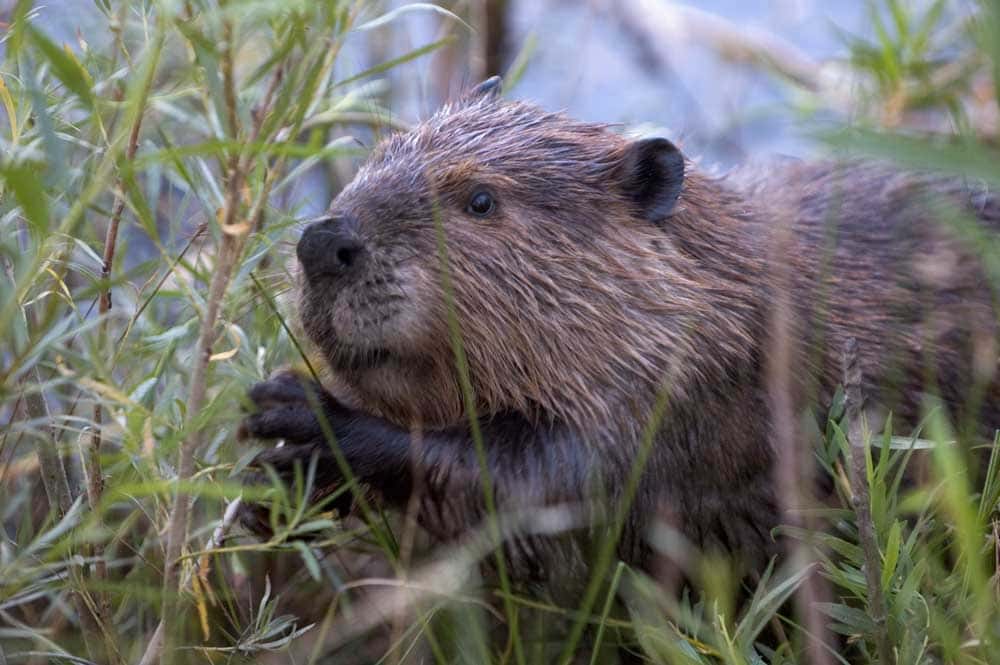
As the largest
rodent
in Florida, the beaver typically weighs between 30 to 50 pounds.
©No machine-readable author provided. Cszmurlo assumed (based on copyright claims), CC BY-SA 3.0, via Wikimedia Commons – Original / License
The American beaver is known to thrive in rivers, streams, lakes, or swamps that offer an abundant supply of trees throughout the upper peninsula and Florida panhandle. In the United States, people often call this species the “beaver.”
As the largest rodent in Florida, the beaver typically weighs between 30 to 50 pounds. This rodent has a stocky body, and its coat can range from yellow-brown to almost black, with a flat, scaly tail. The beaver mainly feeds on aquatic plants, woody stems, and leaves.
Beavers are known for their highly social nature and form colonies consisting of about 8 individuals in each group. Within these colonies, they establish a hierarchy and lived together in harmony.
The beaver’s teeth grow continuously and require regular gnawing on trees to prevent them from becoming too long. They also use their tails for swimming and flapping the water to ward off predators. These animals are well-suited to cold temperatures and remain active during the winter, maintaining order in ponds around their lodges.
Are American Beavers Dangerous?
Beavers exhibit aggressive behavior when they perceive a threat to their territory. In the event of a rabies infection, their hostility can escalate, and they may also attack humans out of fear or confusion during daylight hours. The sharp teeth possessed by beavers pose a significant danger, as they can easily penetrate limbs and cause substantial blood loss.
Furthermore, beaver attacks can have fatal consequences for domesticated animals. A case was documented in Alaska in 2010 where a dog bitten by a beaver died while undergoing surgery. However, with that said, such attacks on pets and humans are relatively rare.
6. Marsh Rice Rat (Oryzomys palustris)
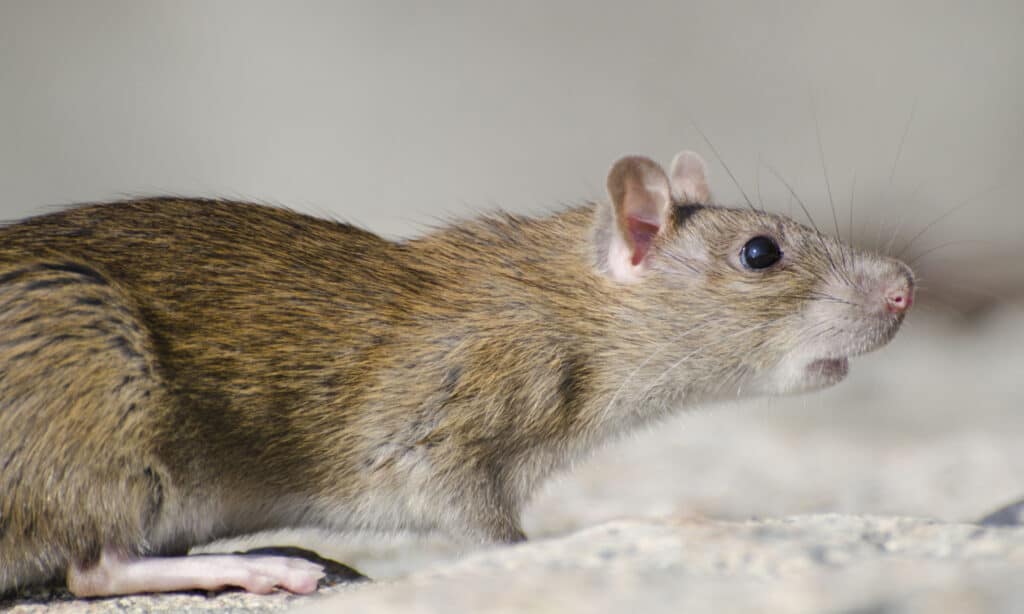
Marsh rice rats can be found in several habitats, ranging from mountain streams to coastal salt marshes and clearings.
©Oakland Images/Shutterstock.com
Last on our list of rodents is the marsh rice rat, a semiaquatic species in North America. Its discovery dates back to 1816 when John Bachman found it in South Carolina.
The marsh rice rat is similar in appearance to the common black and brown rat, with gray to grayish brown dorsal coloring and lighter underparts, tail, and feet. Its feet are specialized for water living, while its underfur is dense, soft, and water-resistant. The total length of this rodent ranges from 9 to 12 inches.
The marsh rice rat is a flexible feeder, consuming both plant and animal matter, allowing it to act as a predator, herbivore, and scavenger.
Marsh rice rats can be found in several habitats, ranging from mountain streams to coastal salt marshes and clearings. They prefer areas with grasses and sedges covering the ground, as this vegetation helps shield them from predators.
The marsh rice rat population as a whole is considered stable and widespread, with no major threats to their survival. However, the Florida Keys species is in danger of becoming extinct because of habitat loss, competition from black rats, and predation by domestic cats. Therefore, it is now classified as an endangered species.
Are Marsh Rice Rats Dangerous?
Due to their limited interaction with humans, marsh rice rats do not pose a significant threat to people. However, it is important to note that this species is one of the few rodents capable of transmitting the dangerous Hantavirus. Since they do not live in buildings and sewers like other rats, the chances of getting infected are quite low.
While marsh rice rats generally do not cause issues, they can become pests in agricultural settings and have been known to cause damage to rice fields.
Summary of 6 Rodents Invading Florida Right Now
| # | Rat | Danger Level |
|---|---|---|
| 1 | Black Rat | Devastate crops and ecosystems, carry diseases |
| 2 | Brown Rat | Carry various pathogens and bacteria, damage infrastructure |
| 3 | House Mouse | Spread bacteria and damage homes by chewing |
| 4 | Deer Mouse | Structural damage and spread bacteria |
| 5 | American Beaver | Territorial – bites could be fatal for pets |
| 6 | Marsh Rice Rat | Minimal threat |
Thank you for reading! Have some feedback for us? Contact the AZ Animals editorial team.








